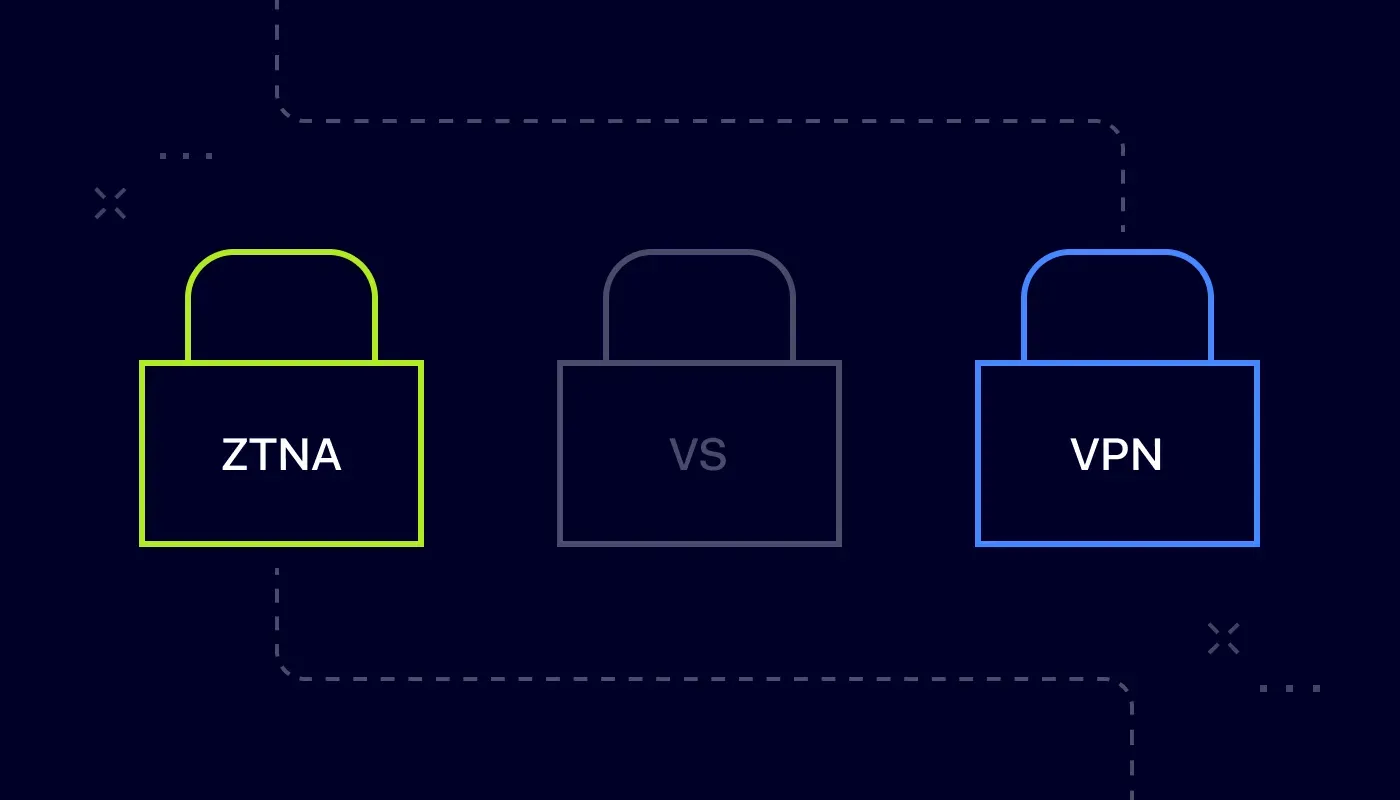A New Approach to Security: Comparing ZTNA and VPN
Key Takeaways
- ZTNA and VPN are two distinct approaches to network security, each serving different purposes.
- ZTNA focuses on providing seamless connectivity with enhanced security for users.
- VPN offers privacy protection by encrypting internet traffic, but it may present specific security limitations.
- Understanding the differences between these two technologies can help businesses choose the right solution for their needs.
Comparing ZTNA and VPN: An Overview
In today’s fast-paced digital environment, the integrity and confidentiality of sensitive information are paramount, and the question of ZTNA vs. VPN has become a focal point. While both technological solutions aim to bolster cybersecurity, they operate on distinct principles and serve specific roles within network architecture. Zero Trust Network Access (ZTNA) is characterized by its ‘never trust, always verify’ ethos. It provides security by continuously validating users and devices, allowing controlled access. In contrast, Virtual Private Networks (VPN) facilitate secure remote access by encrypting the data between a user’s device and the destination network.
A deeper understanding of these technologies is crucial in the modern cybersecurity landscape, where threats are numerous and increasingly sophisticated. VPNs provide privacy and anonymity to users by creating secure tunnels through which their data travels, effectively shielding them from unnecessary exposure on public networks. On the other hand, ZTNA recognizes the shortcomings of traditional security frameworks that rely on internal network boundaries, ensuring that every access request is critically evaluated and authorized. This difference in approach offers distinct benefits aligned with contemporary security needs, shaping how organizations choose to protect their digital assets.
Introduction to VPN
VPNs have been ubiquitous in secure online communications for decades, serving as the foundation of many individuals’ and organizations’ privacy strategies. The technology establishes a virtual point-to-point connection through dedicated circuits or tunneling protocols over existing networks. This enables the secure exchange of data between remote users and corporate servers. As such, VPNs effectively allow users to access private networks as if they were directly connected, regardless of their geographical location.
The primary allure of VPNs lies in their ability to conceal a user’s internet traffic and mask their IP address, creating an anonymous web presence. This proves essential for those accessing restricted content or attempting to safeguard themselves from network surveillance and cyber threats. Within the corporate domain, VPNs allow employees to safely access organizational resources from any remote location, enhancing productivity without sacrificing security. As reliable protectors of data, VPNs are a trusted resource in an ever-evolving digital world.
Limitations of VPN
Despite the protective layer offered by VPNs, they are not without significant limitations that users and organizations must contend with. Primarily, VPNs can lead to a reduction in internet speed. The overhead created by encrypting and decrypting data across different servers can result in noticeable latency, impacting user experience, especially in bandwidth-intensive applications such as video streaming or real-time gaming.
Another concern is VPNs’ reliance on a trust model that may inadvertently provide a false sense of security. Once a user is authenticated, they typically gain access to the entire network, an approach that can pose risks if the user’s credentials are compromised. This broad access presents an opportunity for potential intruders to exploit vulnerabilities and move laterally within the network, posing a significant threat to sensitive information. These inherent limitations underline the need for supplementary security solutions that acknowledge and address these vulnerabilities.
What ZTNA Offers
Contrasting with VPNs, Zero Trust Network Access (ZTNA) presents a cutting-edge approach that aligns with the needs of modern dynamic environments. Built upon the principle of least privileged access, ZTNA enforces strict identity verification, ensuring no implicit trust is granted within a network perimeter. This approach radically shifts the security paradigm by treating every access request as potentially hostile.
Using identity as the new perimeter, ZTNA ensures that access to applications is granted only after users’ identities are verified through multiple factors and contextual elements, such as geolocation, device health, and user behavior. As elucidated by Forbes, such granular, context-aware security is paramount in defending against the complex, persistent threats faced by corporations today. With the rise of cloud adoption and remote working, ZTNA seamlessly integrates security measures into organizational workflows, providing robust protection without compromising agility and user experience.
Benefits of ZTNA Over VPN
When evaluating the benefits of ZTNA compared to VPNs, one is struck by the former’s ability to provide focused, contextual access control. ZTNA’s finer security granularity ensures that users are granted access strictly in alignment with their job functions, effectively curbing unnecessary exposure of applications and data.
This meticulous level of control enhances security while simultaneously delivering a tailored user experience. Unlike the broad access typical with VPNs, ZTNA dynamically enforces access policies based on real-time threat intelligence, allowing organizations to detect anomalies and mitigate risks swiftly and preemptively. The value of ZTNA’s proactive threat detection cannot be overstated in an era where cyber threats continually evolve, posing more complex challenges to traditional security measures. This approach ultimately reinforces an organization’s cyber resilience, striking a fine balance between accessibility and security.
Choosing the Right Solution
Organizations selecting between ZTNA and VPN must critically evaluate their unique security requirements and strategic goals. Considerations such as scalability, user experience, compliance obligations, and compatibility with the existing IT infrastructure should guide this decision-making process. It’s essential that the chosen solution not only addresses current security challenges but also adapts to future developments in the cybersecurity landscape.
Businesses that strongly emphasize tailored access oversight and continuous threat intelligence may favor ZTNA, while those that prioritize broader connectivity and privacy might continue to benefit from VPN solutions. Ultimately, success in network security lies in a well-balanced approach, where understanding the capabilities and limitations of each tool aids in constructing a robust, resilient security posture. As cyber threats evolve, staying informed about these technologies empowers organizations to make informed, strategic decisions that protect digital assets and foster secure growth.






